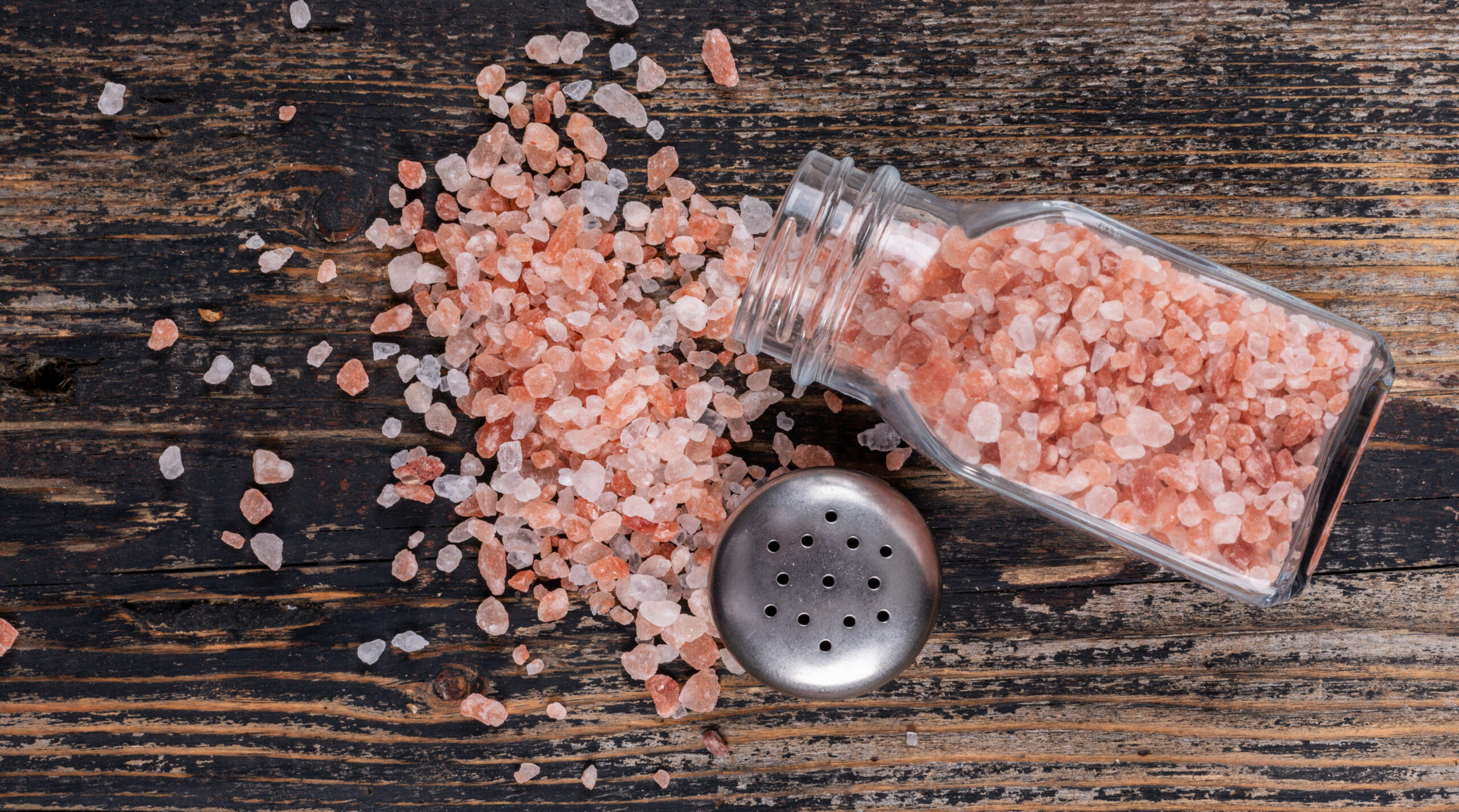
Himalayan salt coming out of open salt shaker on a dark wooden background. top view.
Rock salt and pink salt are the same type of salt. The differences are in the names, not the salt itself
Image by 8photo on Freepik
Rock salt is mined from salt mountains as large rocks. It’s also known as:
Himalayan salt, Pink salt, Khewra salt, Sendha namak, Halite, Saindhav lavana.
Rock salt is chemically the same as pink salt. Most rock salt is pink because of a small amount of iron in the original sea water. The color can vary slightly depending on where the salt mine is.
Himalayan pink salt is one of the best known types of rock salt. It’s considered the best because it contains 84-92 trace minerals out of 118 known elements.
Rock salt, also known as halite, is a sedimentary rock that forms from the evaporation of salty water. It’s found in the Earth’s rocky under layers and can be extracted through deep-shaft mining
Rock salt is made by:
- Solution mining
Pumping hot water under pressure into a subsurface layer of rock salt. The water creates brine, which is then pumped back up to the surface. The brine is evaporated in large vessels to create white salt.
- Growing rock salt crystals
Boiling water, stirring in salt until it’s saturated, and pouring the solution into a container.
Rock salt is 85% sodium chloride and 15% other elements, including:
Iron, Copper, Zinc, Iodine, Manganese, Magnesium, Selenium.
Rock salt is used in industry, by food manufacturers, and at the table. It’s also used as a home remedy for digestive problems.
Top of Form
Rock salt has many health benefits, including:
- Improves digestion: Rock salt can balance the pH levels in the stomach, which can help with acid reflux and indigestion.
- Boosts metabolism: Rock salt can improve the body’s absorption of water and help the digestive system function.
- Boosts immune system: Rock salt contains trace minerals like manganese, copper, iron, zinc, potassium, iodine, and magnesium.
These minerals can help the body fight off illnesses.
- Relieves muscle cramps: Rock salt can help nerves and muscles function properly.
- Treats sore throat: Gargling saltwater can help kill bacteria, loosen mucus, and ease pain.
- Stabilizes blood pressure: Black salt can act as a natural blood thinner and regulate blood pressure.
- Promotes healthy skin: Himalayan rock salt can exfoliate the skin and get rid of dead skin.
Rock salt can also help relieve stress.
Himalayan salt water can help with constipation.
Saltwater can act as a laxative and stimulate gut movements.
Himalayan salt water can also help with digestion. Drinking it on an empty stomach can stimulate the secretion of digestive juices, which can help with bloating and indigestion.
You can try a salt water flush with Himalayan salt:
- Dissolve two teaspoons of non-iodized salt, like Himalayan sea salt, in one quart of warm water.
- Add lemon juice to improve the taste.
- Drink the mixture as quickly as possible on an empty stomach.
You can also drink a Himalayan salt sole every morning. This can help with detoxification, removing waste and toxins from your body, balancing pH, and aiding digestion.
However, Himalayan pink salt carries the same risks as sea salt. Eating too much Himalayan pink salt can lead to high blood pressure, which can increase the risk of developing heart disease or having a stroke.





